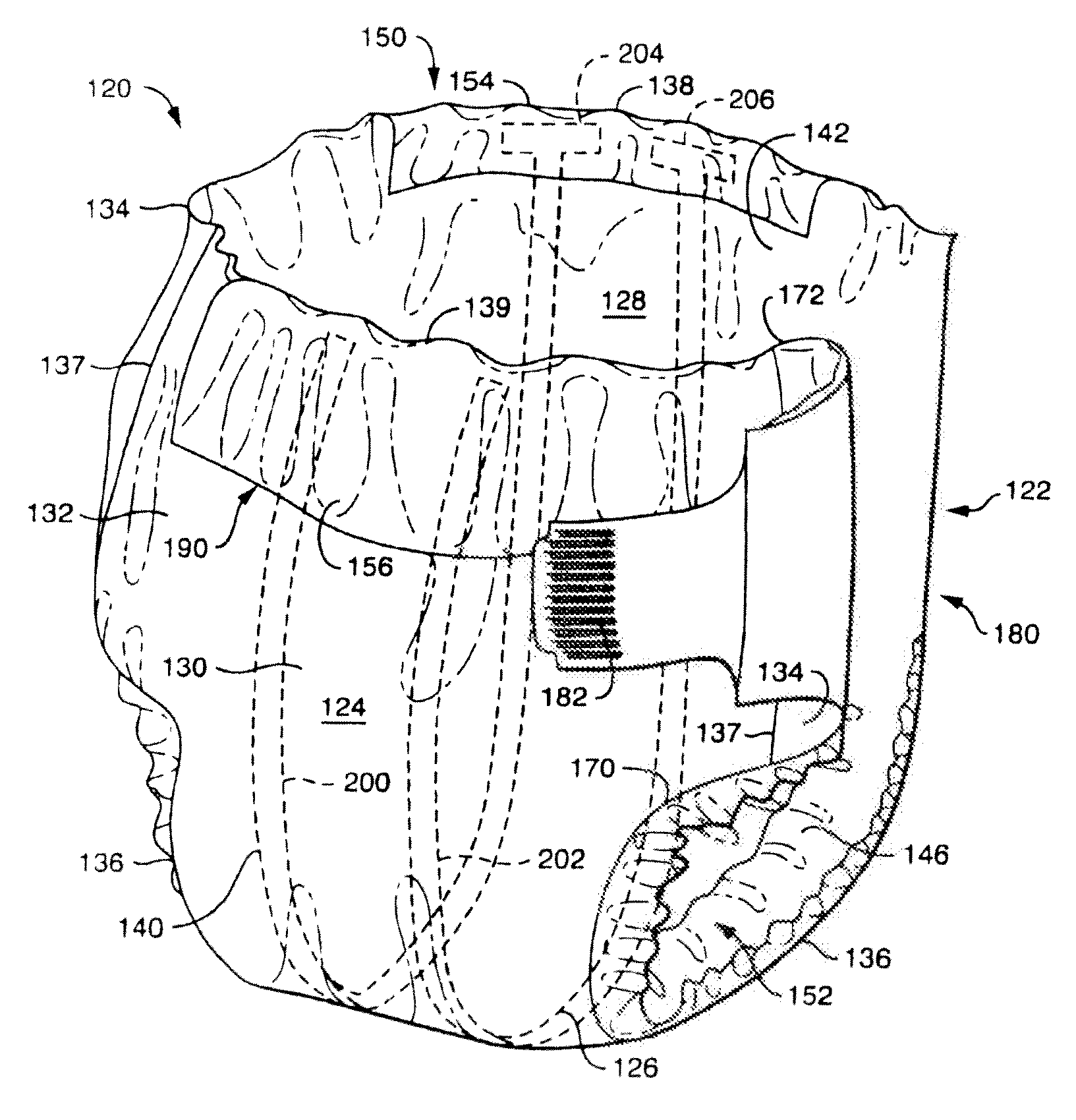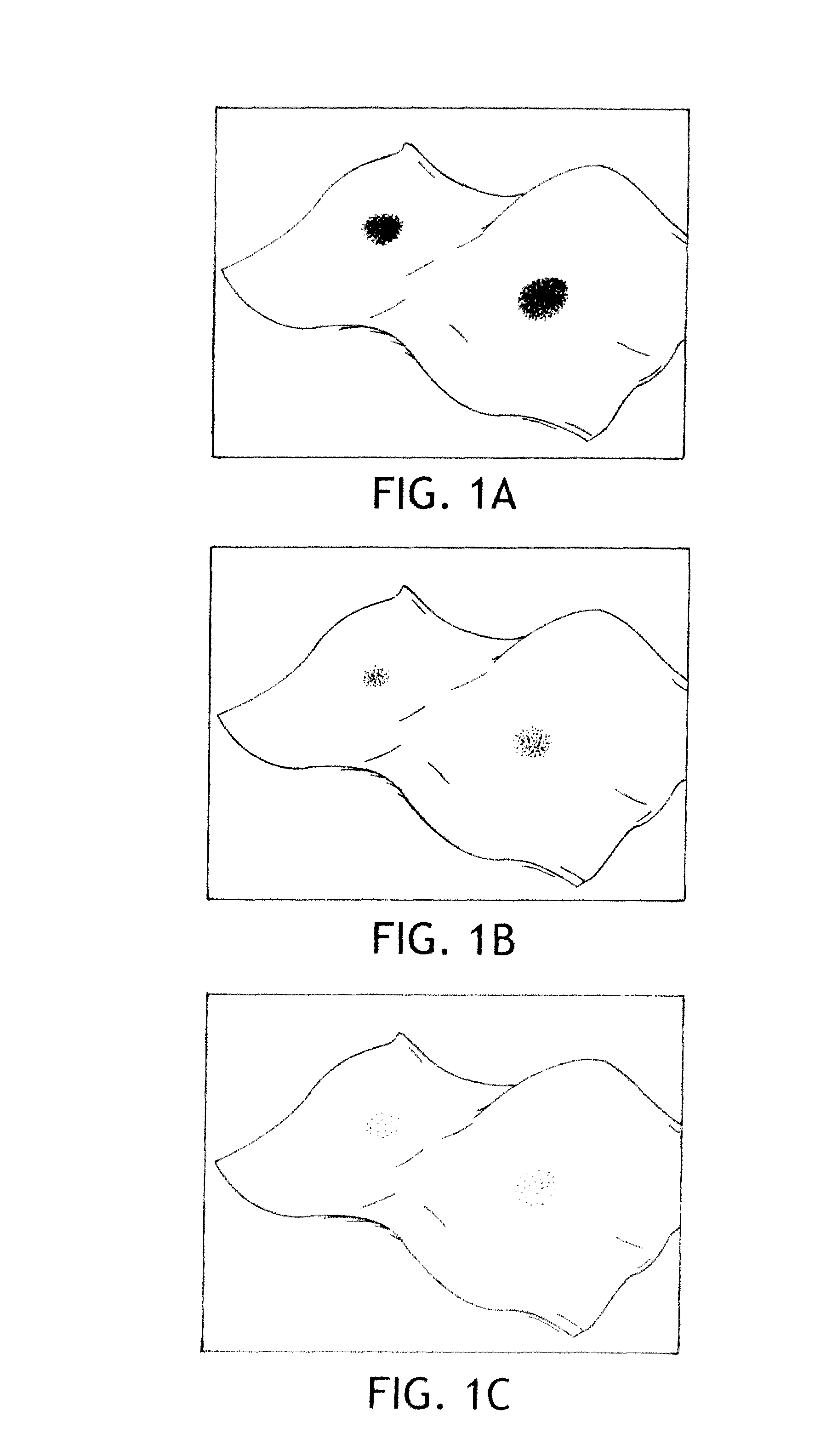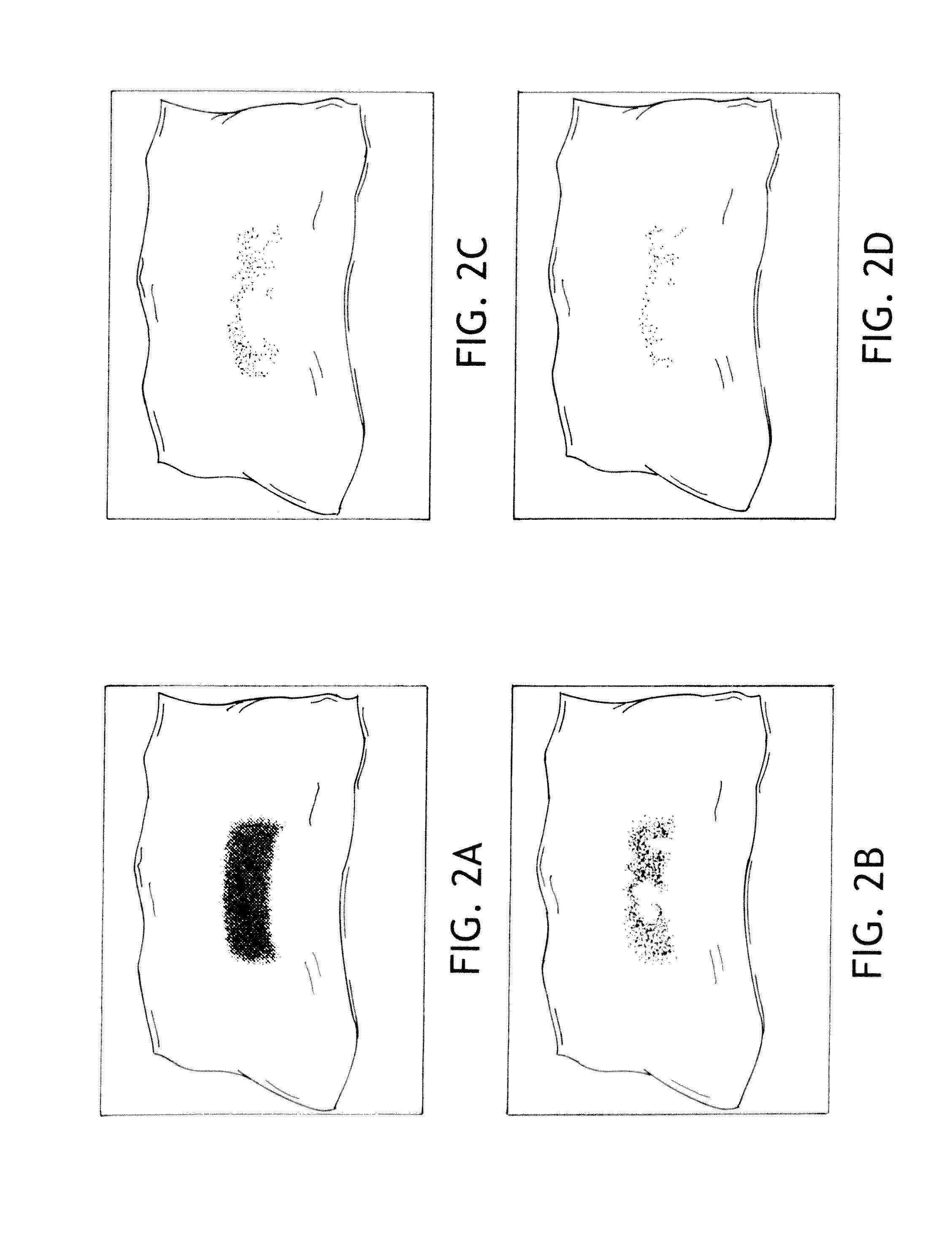Absorbent Products with Wetness Sensors
a technology of absorbent articles and wetness indicators, applied in the field of absorbent articles having wetness indicators, can solve the problems of wearers not being aware of the failure of urination control, wearers not being aware of the need for changing the absorbent article, etc., and achieves the effect of rapid change of the observable color of the indicating material and low viscosity
- Summary
- Abstract
- Description
- Claims
- Application Information
AI Technical Summary
Benefits of technology
Problems solved by technology
Method used
Image
Examples
examples
[0069]The present disclosure can be better understood with reference to the following empirical examples:
example
[0070]1. A blue colored ink having an electron donative component and an electron acceptive developing component (PapyEco Ltd. Co., Japan) is applied to a piece or portion of the kinds of following substrates: a) cellulosic paper, such as Kimwipes or Kleenex brand facial tissue (e.g., illustrated in FIGS. 2A-2D), and b) polymeric films, plastics and polyolefins, such as the outer cover film of a diaper and spun-bond non-woven materials (e.g., illustrated in FIGS. 1A-1C—blue ink alone on film). The ink materials are allowed to air-dry at room temperature. A piece of each of the above kind of materials is sandwiched between the superabsorbant material and the outer cover using a tape to secure the pieces. Different amounts of urine are applied to the center of the diaper. For wetness sensor with cellulosic papers, such as Kimwipes, 5 ml of urine causes little discoloration after 5 minutes. Significant discoloration is observed 5 minutes after 10 ml urine insult. Most of the color disa...
PUM
 Login to View More
Login to View More Abstract
Description
Claims
Application Information
 Login to View More
Login to View More - R&D
- Intellectual Property
- Life Sciences
- Materials
- Tech Scout
- Unparalleled Data Quality
- Higher Quality Content
- 60% Fewer Hallucinations
Browse by: Latest US Patents, China's latest patents, Technical Efficacy Thesaurus, Application Domain, Technology Topic, Popular Technical Reports.
© 2025 PatSnap. All rights reserved.Legal|Privacy policy|Modern Slavery Act Transparency Statement|Sitemap|About US| Contact US: help@patsnap.com



